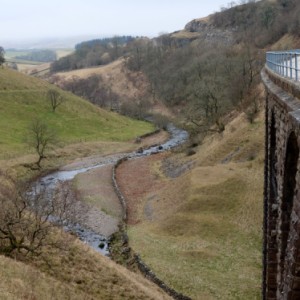I know . . .
I know I said I was not going to blip another lime kiln, but a few people reminded me about these huge ones at Smardale. It is an area that we have walked many times, but not recently. So we set out through Smardale Gill Nature Reserve, along the disused railway line that once ran from Tebay to Darlington, and across the Smardale Gill viaduct, until we arrived here.
At this point we are looking down the track towards the viaduct. You can see the outline of the railway sleepers in the grass and you have a glimpse of the huge quarries where limestone was dug out for building and to feed the lime kilns.
These kilns are obviously much bigger than the small field kilns, that are dotted around the countryside to provide lime for agricultural purposes. These kilns produced lime on an industrial scale and were built to take advantage of the Tebay-Darlington railway line, which was opened in 1861. For a number of years these kilns supplied lime for the steelworks at Darlington and Barrow. The height of the opening is significant because the burnt lime could be loaded directly onto the railway wagons standing in the sidings.
It's hard to imagine what a hive of activity this spot would have been 150 years ago - the quarry, the kilns, the railway. What a noise, what fumes, the number of people. Now it is a peaceful spot on the Nature Reserve, inhabited only by wildlife and walkers.
The extra picture is the view of Smardale from the start of the viaduct. In the distance you can just see the quarry and the kilns. Unfortunately, a blanket of cloud in the far distance hides the view of the Howgill Fells.


Comments
Sign in or get an account to comment.


